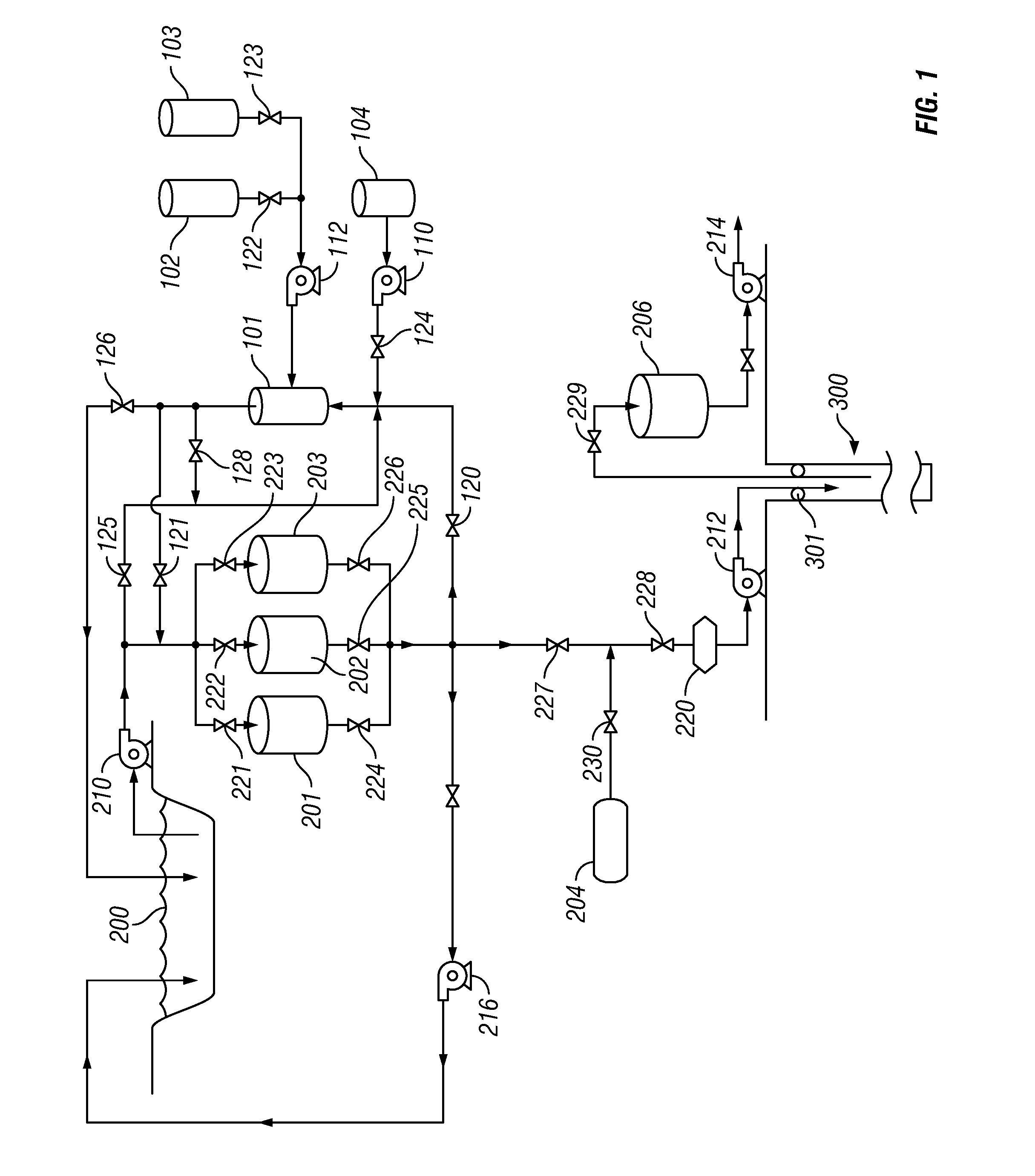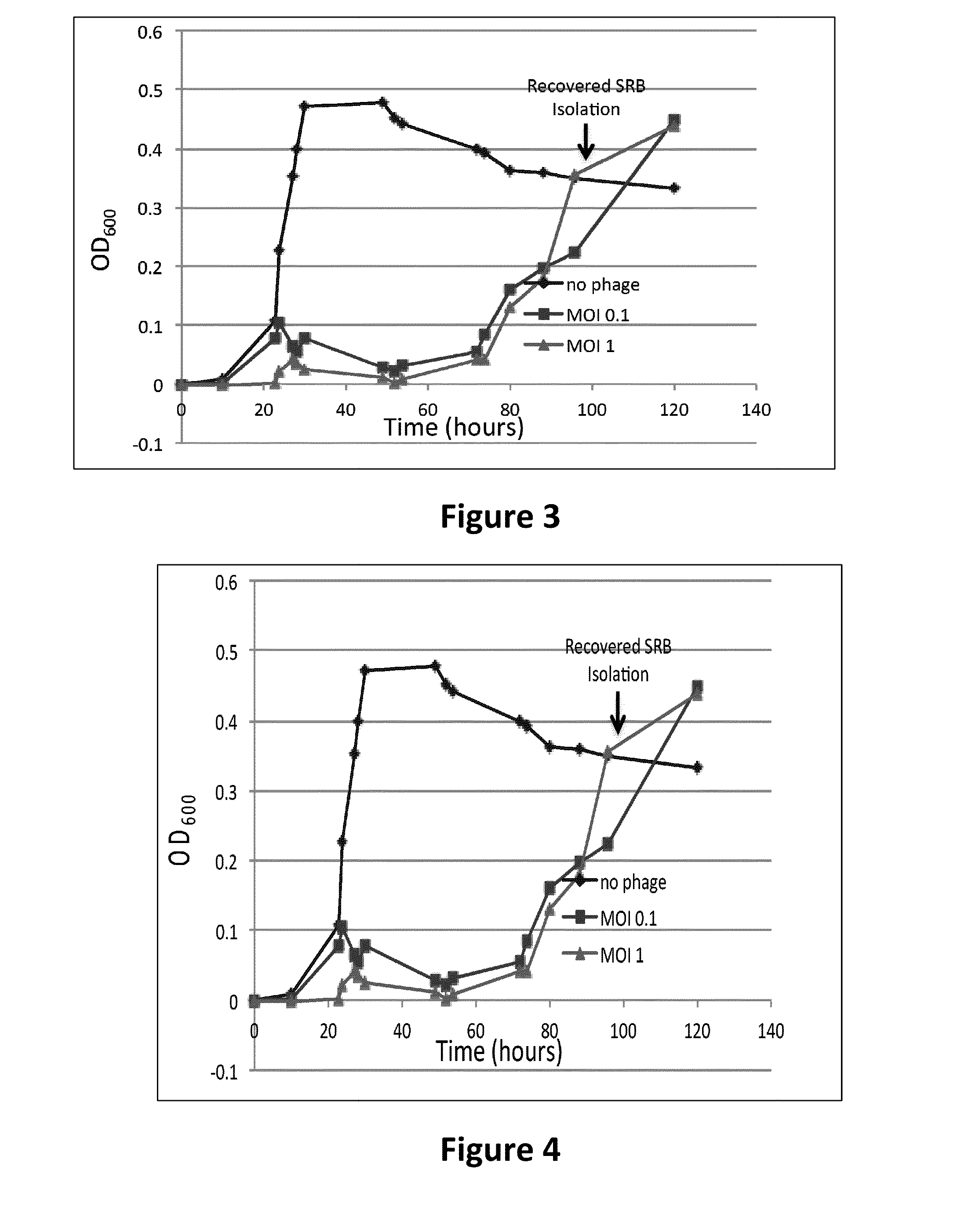Prevention and Remediation of Petroleum Reservoir Souring and Corrosion by Treatment with Virulent Bacteriophage
a technology of bacteriophage and petroleum reservoir, which is applied in the direction of viruses/bacteriophages, biological water/sewage treatment, and recovery/purification, etc., can solve the problems of reducing the value of products, profound negative effects on oil and natural gas recovery, and widespread microorganisms, including bacteria
- Summary
- Abstract
- Description
- Claims
- Application Information
AI Technical Summary
Benefits of technology
Problems solved by technology
Method used
Image
Examples
Embodiment Construction
[0021]Current methods of microbial control in oil and gas geological formations and wells apply broad spectrum biocides, typically by injection into the stream of fracture or flood water at a blender prior to injection into the well. Customary biocides include glutaraldehyde, glutaraldehyde / quaternary ammonium compound blends, isothiazolin, tetrakis(hydromethyl) phosphonium sulfate (THPS), 2,2-dibromo-3-nitrilopropionamide, and bronopol. However, these biocides often have major health risks to humans and all animals in the food chain. THPS and hypochlorite bleach are the most commonly used antimicrobials in the Barnett shale operations area. These EPA registered biocides cannot be introduced into an open pond, as they will permeate into the groundwater, killing aquatic organisms and frequently being consumed by terrestrial animals. All biocides in use by the industry are intentionally employed in a broad spectrum manner. Their effectiveness is determined by conventional culturing me...
PUM
 Login to View More
Login to View More Abstract
Description
Claims
Application Information
 Login to View More
Login to View More - R&D
- Intellectual Property
- Life Sciences
- Materials
- Tech Scout
- Unparalleled Data Quality
- Higher Quality Content
- 60% Fewer Hallucinations
Browse by: Latest US Patents, China's latest patents, Technical Efficacy Thesaurus, Application Domain, Technology Topic, Popular Technical Reports.
© 2025 PatSnap. All rights reserved.Legal|Privacy policy|Modern Slavery Act Transparency Statement|Sitemap|About US| Contact US: help@patsnap.com



